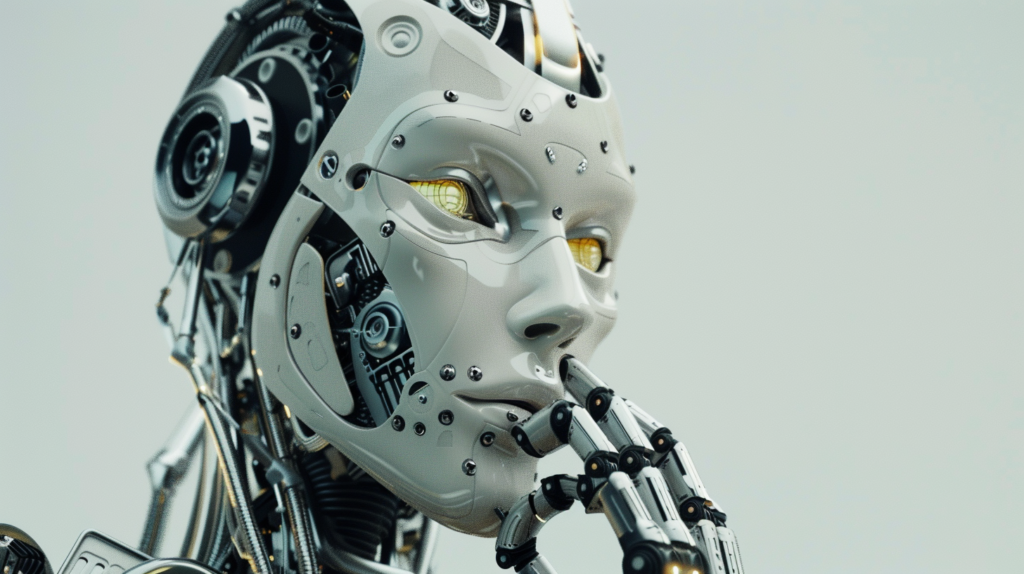What Is the Turing Test

The Turing Test, proposed by computer scientist Alan Turing in the 1950s, is a widely recognized method for evaluating the extent to which a machine can exhibit human-like intelligence. This test, which involves a judge interacting with both a human and a machine, aims to determine if the machine is capable of convincingly imitating human behavior.
With the rapid advancements in artificial intelligence, the Turing Test has become a crucial benchmark for assessing the progress and potential of intelligent machines. However, while the test has been a significant milestone in AI research, it also raises intriguing questions about the nature of human intelligence and the future of artificial general intelligence.
By exploring the intricacies of the Turing Test, we can gain valuable insights into the capabilities and limitations of intelligent machines, leaving us pondering the possibilities that lie ahead.

Alan Turing: The Genius Behind the Test
Alan Turing, a renowned computer scientist, is the brilliant mind behind the development of the Turing Test, a groundbreaking method for assessing a machine’s capacity to replicate human-like responses and intelligence. Proposed in the 1950s, the Turing Test serves as a benchmark for measuring the success of AI research and is considered a significant step towards achieving artificial general intelligence.
Turing, widely regarded as a genius in the field of computer science, was fascinated by the concept of machine intelligence and sought to explore the limits of what machines could achieve. His work on the Turing Test was motivated by the question of whether machines could exhibit human-like behavior and intelligence.
In the article titled ‘What Is the Turing Test,’ this section will delve into the genius of Alan Turing and his contributions to the field of artificial intelligence. Turing’s groundbreaking ideas and pioneering research laid the foundation for the development of the Turing Test, which continues to be a crucial tool in the evaluation of machine intelligence. His theoretical work remains influential in the field, and his legacy as a visionary continues to inspire generations of researchers in the pursuit of creating intelligent machines.
Understanding the Concept of Artificial Intelligence
Artificial Intelligence is a field of study focused on creating machines that can exhibit human-like intelligence and behavior. The Turing Test is an essential concept within the realm of artificial intelligence. Proposed by Alan Turing in 1950, it serves as a method to evaluate a machine’s ability to simulate human-like conversation.
The test involves a judge engaging in separate conversations with both a human and a machine. If the judge cannot distinguish the machine’s responses from the human’s, the machine is considered to have passed the test. The Turing Test has become a benchmark for measuring the success of AI research, as it aims to achieve artificial general intelligence.
It has also sparked discussions and debates about the nature of intelligence, consciousness, and the capabilities of machines. Various versions and alternative formulations of the Turing Test exist, including the three-player game, reverse Turing Test, total Turing Test, Marcus Test, Winograd Schema Challenge, and more. Understanding the concept of artificial intelligence is crucial in comprehending the significance and implications of the Turing Test in the field of AI research and development.
How the Turing Test Works
The Turing Test is a method used to assess a computer’s ability to replicate human-like responses and intelligence. Proposed by Alan Turing in the 1950s, this test is designed to determine if a machine can convincingly imitate a human. The test involves a human judge interacting with both a computer and a human through separate terminals, with the goal of identifying which is which based on their responses.
To pass the Turing Test, the computer must successfully imitate human behavior to the point where the judge cannot distinguish it from the human participant. This requires the machine to demonstrate a level of intelligence and understanding comparable to that of a human.
While the original test involves three terminals, with the computer and humans each operating one, variations and debates have emerged. These include the Reverse Turing Test, where the computer acts as the judge, and the Total Turing Test, which incorporates multiple evaluation methods to assess a machine’s intelligence comprehensively.
The Turing Test is widely regarded as a benchmark for evaluating the progress of artificial intelligence research. It not only explores the boundaries of machine intelligence but also raises fundamental questions about the nature of human intelligence and consciousness.
Evaluating the Successes and Limitations of the Test
Having explored the intricacies of the Turing Test and its application in assessing machine intelligence, it is now imperative to evaluate the test’s successes and limitations in achieving its intended goals.
The Turing Test has been influential in the fields of artificial intelligence and philosophy, sparking debates about the nature of intelligence, consciousness, and the capabilities of machines. It has provided a benchmark for measuring the success of AI research and has pushed the boundaries of what machines can achieve in terms of human-like conversation.
However, the test also has its limitations. One limitation is the need for a controlled environment, where the judge can only rely on textual responses and cannot assess other aspects of intelligence, such as physical presence or sensory perception. Additionally, the test lacks a clear definition of intelligence, making it difficult to determine whether a machine’s performance truly reflects human-like intelligence.
Furthermore, the test may not accurately assess emotional intelligence, as it primarily focuses on linguistic abilities. Overall, while the Turing Test has had successes in stimulating research and philosophical discussions, its limitations highlight the need for further improvements and alternative methodologies in evaluating machine intelligence.
The Future of the Turing Test and AI Development
Moving forward, the evolution of the Turing Test and advancements in AI development will shape the future landscape of machine intelligence assessment and human-machine interaction. The Turing Test will continue to be influential in the field of AI, serving as a benchmark for measuring progress and sparking debates about the nature of intelligence and consciousness.
However, the focus of AI development will shift towards improving human-machine interaction rather than solely aiming to pass the Turing Test. This means that AI systems will strive to understand context, emotions, and non-verbal cues to enhance their ability to interact with humans in a more natural and intuitive manner.
As AI technology progresses, alternative formulations of the Turing Test and new tests will likely be developed to address perceived limitations and push the boundaries of AI capabilities. These developments will contribute to a deeper understanding of machine intelligence and its potential applications. However, the Turing Test will face ongoing criticism and debates, particularly regarding its limitations and the true measure of machine intelligence.
Furthermore, the progress made by AI in passing the Turing Test will necessitate ethical considerations, regulations, and discussions about the societal implications of increasingly human-like AI. It will be crucial to establish guidelines and frameworks to ensure responsible and beneficial use of AI technology.
The future of the Turing Test and AI development holds immense potential and will continue to shape the way we interact with intelligent machines.

Frequently Asked Questions
What Is the Turing Test Explained?
The Turing Test is a method to determine a machine’s ability to exhibit human-like intelligence. It involves a judge questioning a human and a machine and determining if they can distinguish between the two based on their responses.
Has Anyone Passed the Turing Test?
No machine has flawlessly passed the Turing Test, although some have fooled judges to some extent. Passing the Turing Test requires a machine to convincingly exhibit human-like responses and intelligence, an achievement that has not yet been accomplished.
Has Chatgpt Passed the Turing Test?
While no machine has flawlessly passed the Turing Test, it has not been confirmed whether ChatGPT has passed the test. The Turing Test remains a benchmark for evaluating AI and sparks ongoing debates about machine capabilities.
What Is a Turing Test Question?
A Turing test question is a query posed to both a human and a machine in the context of the Turing Test. Its purpose is to assess the machine’s ability to exhibit human-like responses and intelligence.
Conclusion
In conclusion, the Turing Test, proposed by Alan Turing in the 1950s, is a significant benchmark in evaluating the capabilities of artificial intelligence systems. By simulating human-like behavior and responses, this test provides insights into the progress and potential of AI development.
However, the test also has its limitations and its future in the field of AI remains to be explored. Overall, the Turing Test has played a crucial role in advancing our understanding of intelligent machines.







Responses